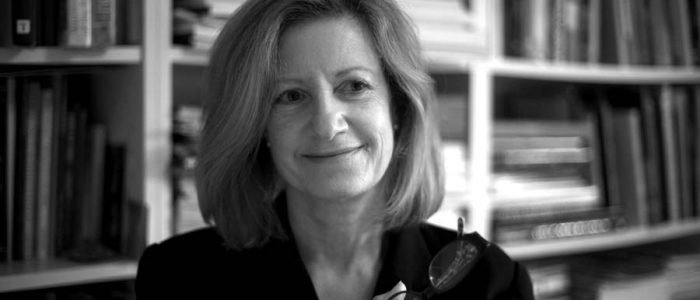Christine Argillet Exhibits Rare Salvador Dali Tapestries and Etchings
Reprinted from West Palm Beach Magazine
The most famous surrealist painter of them all, Salvador Dali, is having a rare exhibit in Palm Beach through the end of January. Making this exhibit possible is Madame Christine Argillet, whose father Pierre Argillet was Dali’s publisher and collaborator from 1934 to 1973.
Young Christine knew Dali as her father’s “special” friend, and has fabulous, unusual childhood memories of being around the unpredictable Spanish painter.
From Dada, through Surrealism to contemporary art, the Christine Argillet’s collection consists of paintings, drawings, original etchings, tapestries, sculptures, photographs and archivals from 1904 until now. Dali’s open-mindedness and ability to embrace topics and themes can also be seen in his etchings and drawings, which feature themes from religion to eroticism.
“From about 1960 to 1973 my family was in Spain with Dali, so I spent a lot of time with him at his home and his studio,” Christine says by phone from her home in Los Angeles. “I knew him as my father’s amazing friend and collaborator and knew he was special since my father was always so excited to work him. I will be exhibiting 100 pieces from my family’s collection for the first time together including 9 watercolors and 5 tapestries.”
“The handwoven tapestries are very special and rare. They were made late in Dali’s career as a project between my father and Dali. Dali had been making etchings on copper plate but it became harder for him to make due to the chemicals and process involved. My father didn’t want to make lithographs or prints from his etchings, he wanted something different, large, and unusual so they decided to make tapestries from his etchings, hiring the best weavers they could find, a company called Picaud that dates back to the 14th century. These are very beautiful and rare and have a warm feeling about them due to the fabric. It was a large collaboration and the tapestries made a big piece with colorization possible – a very different way to show his art. One of them called Argus features a peacock whose fan tail feathers turn into eyes. Another factor was that there was a Dali museum opening in Spain and my father was opening a museum in Paris so they needed some larger scale work to show. In later years Dali sold the pieces he put into the Paris Museum to the Dali Museum in St. Petersburg, FL.”
Christine Argillet says the projects went fast, and there were many that didn’t happen.
“I could always feel my fathers excitement when he worked with Dali on these crazy impossible things,” she says. “Even when things went wrong, the fantastic things outweighed the bad. I watched this all happen from the time I was 6 until I was 20. Dali was always fun, always respectful to others, even the local fisherman and ladies making lace in the village where he lived in Spain knew him as he stopped to say hello and see what they were doing all the time. He had a respect for the skills of others, he was very elegant in his manner and the way he dressed and acted. He may have seemed outlandish but he was on a quest to connect with the unconscious, his dreams were a kind of truth. He felt it was important to be understood, even when people were confused by his work he would say ‘Well look deeper, do you see the figures, the layers? Uncover the image and you will understand it more.’”
Even after living with this work for decades, Christine says she still sees new things in them all the time.
“It’s a never ending discovery of his work. There is a lot of humor and a lot of deeper and darker elements too.”
In recent interviews Christine Argillet spoke about Dali’s studio and home.
“Dali had the most creative, yet very simple house. It is located on a quite wild Mediterranean seashore with nothing around except an inn where we used to stay with my parents. He had connected various fishermen’s houses with a corridor, thus forming a ‘labyrinth’. In fact, there were a lot of stairs to accommodate the hilly terrain and it was quite difficult for a neophyte to find his way. His studio had a special device which would allow very large paintings to slide down into a lower room, allowing them to be always at a good height for work. At the entrance, you would find a gigantic white standing bear, which held the umbrellas. A wonderful and mysterious perfume would flow in the air. You would notice that thousands of dried flowers were placed as a frieze around the walls. As you entered the living room, a moving ashtray would come around and you would notice a long silver stick and a living turtle on the ground bringing the ashtray to guests on its back. Everything was enjoyable, charming, very simple. This was the refuge Dali had found to paint quietly during the Spanish warm summers.”
“Dali used to have two paintings in his studio. There was always a very large canvas that he was completing, whistling joyfully as he was working. There was often another painting on an easel, with geometric shapes only. On that painting, he was studying lines of construction, following the Golden Ratio. It was quite intriguing to see the work in progress and how this abstract painting would become a figurative piece.”
She remembers the last time she saw him. “It was in Paris in 1972 for his first big exhibit there. He was still working on paintings and was excited about showing new work.”
If you visit:
Salvador Dali: The Argillet Collection.
Onessimo Fine Art, 4530 PGA Blvd. No. 101, Palm Beach Gardens. 561-355-8061.
Sandra-SchulmanSandra Schulman is an arts writer, music and film producer. Born in Miami, her work has appeared in Billboard, Variety, Rolling Stone, Ocean Drive, Country Music Magazine, The New York Daily News, News From Indian Country, and Entertainment Weekly. She was an entertainment columnist for the South Florida Sun-Sentinel for 8 years. She has authored three books on pop culture. She currently lives in West Palm Beach with her blue eyed whippet.Sandra Schulman’s column appears weekly. Contact her at sandraslink@gmail.com.


Comments are closed.